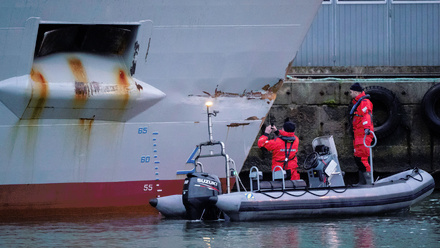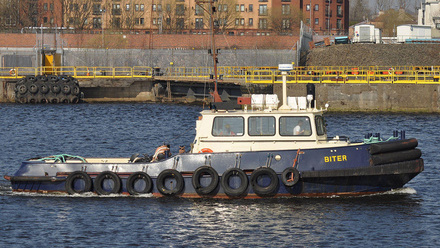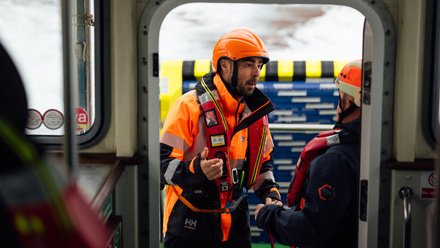Inadvertent steam release results in tragic outcome on cruise ship
On 14 July 2020, the Bahamian registered passenger vessel, Navigator of the Seas, was anchored when a sudden release of steam in a feedwater tank caused a crewmember fatality.
Cruise vessels and their crews are not accustomed to spending such a long time idle, but the Covid-19 pandemic put paid to busy schedules over the course of 2020 and 2021, leaving vessels in layup.
Their crews, in many cases actively barred from returning to shore thanks to restrictions, were compelled to keep themselves busy with whatever tasks they could.
On Navigator of the Seas, anchored off CocoCay in the Bahamas, there were no shortage of jobs needing to be done. Entering into various tanks and enclosed spaces, crews used lockout-tagout (LOTO) to keep themselves safe.
One of few safety procedures likely to be known to the layman, LOTO has saved many workers from the nightmare of climbing inside a machine which is then suddenly switched on. But it is far from foolproof.
What happened on 14 July 2020
Shortly after 10am, three crew, including one junior seafarer, descended into feedwater tank 1 as part of an inspection and routine maintenance operation to clean, scrape and re-paint the tank.
Work had already been done to isolate the tank in accordance with LOTO, and theoretically, all procedures had been followed. On a blow-out line running from the boiler to the feedwater tank, there were two manually-operated valves, V037 and V134, as well as one, V040, which was pneumatically operated. V037 and V134 were secured, with tags to prove it.
Simultaneously, a different team was working on preparing the vessel to leave anchorage. Working his way down the pre-departure checklist, the Officer of the Watch (OOW) requested that a second diesel generator be switched on.
An exhaust gas economiser, working to improve the efficiency of the vessel by recycling generator exhaust gas heat, began to feed its heat into one of the ship’s boilers. Very quickly, the water level in boiler 1 began to increase, coinciding with an increase in steam pressure.
As the boiler water level reached 80%, high-pressure steam surged toward feedwater tank 1, blowing through both the secured V037, and then the pneumatically operated valve (V040) on the blow-out line.
Though painstakingly secured by the crew, valve V134 provided no hindrance to the steam either, and it blasted through into the tank, at a temperature of 170°C and a pressure of 8 bar, directly above where two of the crew were working.
Both seriously injured, they and their uninjured colleague managed to climb from the tank, but it wasn’t soon enough for the junior seafarer, who died in hospital on 19 July, after sustaining serious body surface burns.
What happened in the aftermath
Subsequent investigations, including destructive testing, identified major problems. Valve V037 – the first line of defence, between the boiler and the pneumatic valve – was so corroded that it was impossible to close.
“Testimony from the crew indicates that the valve wheel could be turned a sufficient number of times to lead the operator to believe it was closed,” determined the Bahamas Maritime Authority report, following its investigation into the incident.
But valve V134 should have held. According to subsequent laboratory testing, the valve was in good condition, with no significant corrosion. “Considering the shipboard and bench test, it is concluded that the valve was not fully closed at the time of the casualty,” the report determined.
At the time the tank was being isolated, the second engineer had presumed that with two valves closed manually, isolating the pneumatically operated valve was unnecessary.
Therefore, three lines of defence were rendered moot before the crew entered the tank; V037 had rusted open; pneumatic valve V040 was left to operate automatically; and V134 - despite having been tagged - was not properly closed.
Improving safety in the future
The report also noted that the LOTO procedure left much to be desired, with no set procedure for isolating feedwater tank 1 – instead, this was left to an engineer’s discretion.
In fact, non-electrical systems were not subject to a LOTO policy. “The written procedure for isolating the boilers did not include identification of the valves on the blow-out line,” the Bahamas report adds. Nor, indeed: “A need to apply additional controls to systems incapable of being locked out.”
But leaving non-electrical systems out of the ship’s LOTO policy left much open to interpretation by crew. Under the impression that the relevant equipment had been turned off, and the valves had been isolated in accordance with the advice of the ship’s engineering staff, those going into the tank were not aware of the threat they faced.
“During interviews, the surviving injured crewmember stated that he would not have entered the tank if he had known it was attached to an operational boiler,” said the report.
As is the case with many accidents, it would not have been possible had any one of a number of potential barriers to disaster been in place.
If, for example, the pneumatically operated valve had been deactivated, it would have prevented the steam getting as far as the unsecured V134. Had the boiler been shut down entirely, there would have been no risk to the crew.
Seafarers can follow procedure to the letter, but without the complete picture these situations can still produce catastrophes.
Read more about how mariner safety in enclosed spaces was discussed at the IMO recently.
Main image: A Royal Caribbean Navigator of the Seas cruise ship while docked at the CocoCay port; credit: Shutterstock






